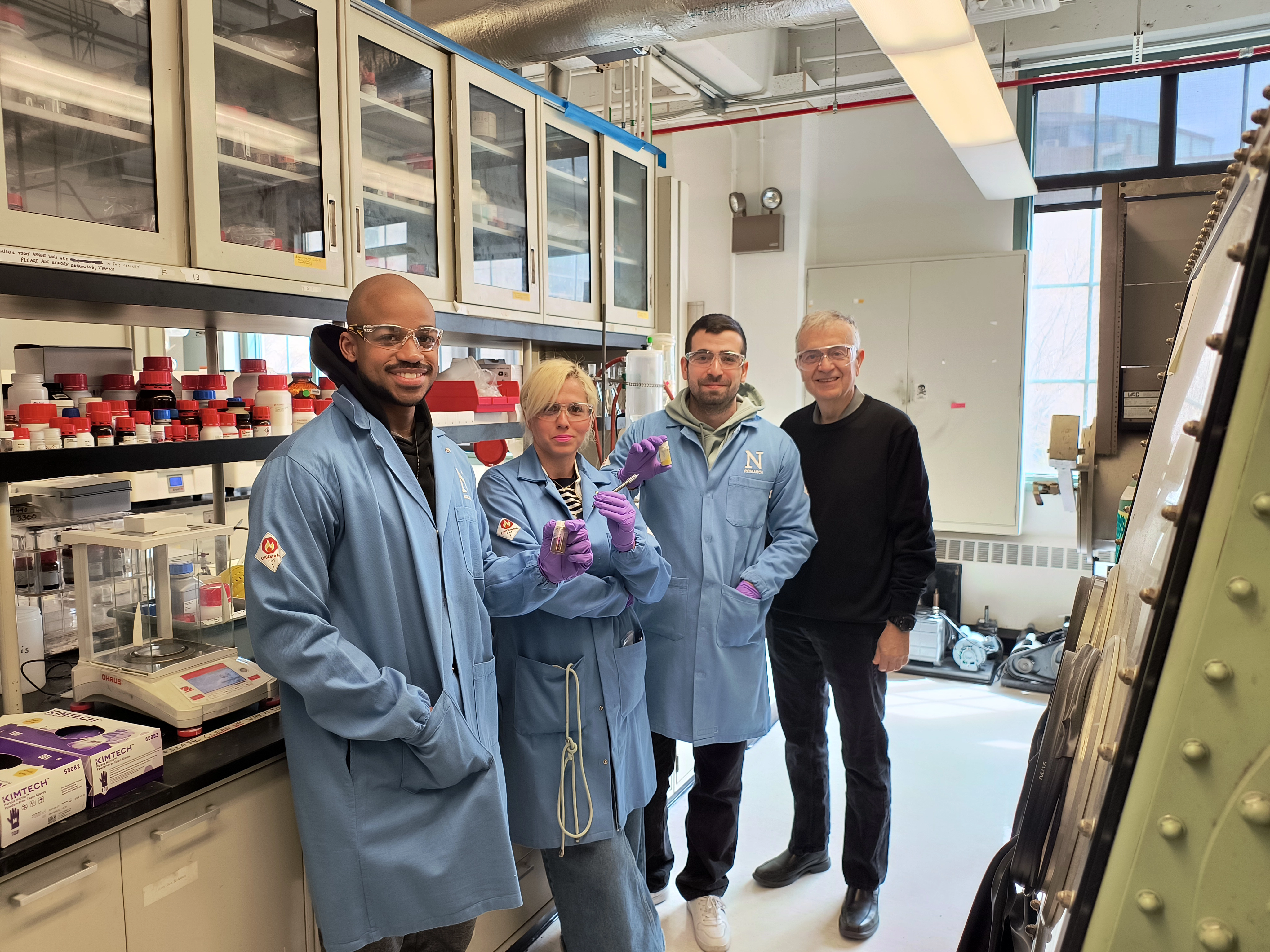Kanatzidis Lab Wins Inaugural $200,000 UL Research Institutes Grant to Make the World Healthier, Safer, and More Sustainable

Across the United States, 15,000 miles of streams are impacted by contamination from industrial waste, including toxic heavy metals from both industrial and mining activities. These pollutants, which industry must address before disposal, pose significant threats to human health and the environment. Northwestern’s Mercouri Kanatzidis, Charles E. and Emma H. Morrison Professor of Chemistry is moving ahead with plans to address this issue as an inaugural recipient of the UL Research Institutes (ULRI) Discoveries in Safety Grant. Through the ULRI Discoveries in Safety Grant Program, ULRI will fund 10 research projects up to $200,000 per year for up to three years in a variety of safety science focus areas including sustainability, individual and societal health and promoting safety at the human-digital interface.
“This grant comes at an ideal time. It's fantastic for us to have the opportunity, thanks to the grant, to take this important work to a higher level,” said Kanatzidis, who is a Faculty Affiliate of the Paula M. Trienens Institute for Sustainability and Energy where the award is being administered.
Kanatzidis’ research, co-led by postdoctoral fellow Anastasia Pournara, will address two complex pathways for contamination. These include acidic mine drainage (AMD), which contains highly toxic minerals like lead, nickel, chromium, and cadmium, as well as industrial electroplating wastewater, which is runoff from factories that coat everyday products like automotive parts, electronic components, and kitchen utensils, in metal. Pournara has previously collaborated with Kanatzidis on a similar project focused on removing uranium from spent fuel. The prior project was funded by the Department of Energy (DOE). Both projects involve ion exchange to transform toxic materials. According to Kanatzidis, determining efficient, practical methods for cleaning the wastewater before it enters streams is essential for human well-being, national development, and ecosystem health.
The researchers will fill a crucial gap in existing cleanup methods—each that have historically come with distinctive drawbacks that range from potential secondhand pollution of water intended for rehabilitation to simple reliance on cost-prohibitive material.
“The mining industry often uses aqueous solutions that are very acidic. They need strong acid to dissolve the rocks and release what they're mining,” explained Kanatzidis. “These rocks may have a mixture of 10, 20 elements, but industry is only recovering the valuable ones which are a small portion of them. Many elements that are left behind are toxic and must be cleaned up.”

Remediating wastewater through chemistry
The effects of AMD on aquatic ecosystems are well-documented. A 1992 spill in Cornwall, England contaminated nearby water sources with more than 13 million gallons of AMD that contained high concentrations of cadmium, arsenic, copper and zinc when industrial storage baths suddenly overflowed. It remains top of mind in the science community as one of the worst AMD pollution tragedies in history.
Kanatzidis’ project aims to test a type of sorbent called metal sulfide ion-exchanges (MSIEs) in acidic real-world conditions to understand how to scale and leverage the materials for applications beyond the lab.
MSIEs, a material designed to remove heavy metals from liquids, are promising as a wastewater remediation strategy because of their excellent chemical stability and ability to distinguish between potential chemical outcomes, attracting toxic metals in wastewater and bonding with them to create a more neutral waste product that is simpler to retrieve.
The Kanatzidis group will focus on three types of sorbents in partnership with industry leaders in mining and electroplating. Kanatzidis expects to yield valuable insight into the current realities of wastewater streams from industry partners and plans to gather water samples from their mine sites.
“Industry partnerships keep the lab testing aligned with real-world contexts,” said Kanatzidis. “We look forward to developing these relationships for a common goal: remediating wastewater.” Kanatzidis is also the Co-Chair of the Generate Pillar, one of Six Pillars of Decarbonization at the Trienens Institute.
Impact in context
After one year, the researchers plan to identify materials that are most suitable for future scaling and to clarify their compatibility with waste characteristics such as chemical stability in wastewater with varying acidity levels. The project aims to play a pivotal role in the future of water treatment technologies, yielding scientific, economic, and social benefits both locally and internationally by combining scientific advancement with practical application.